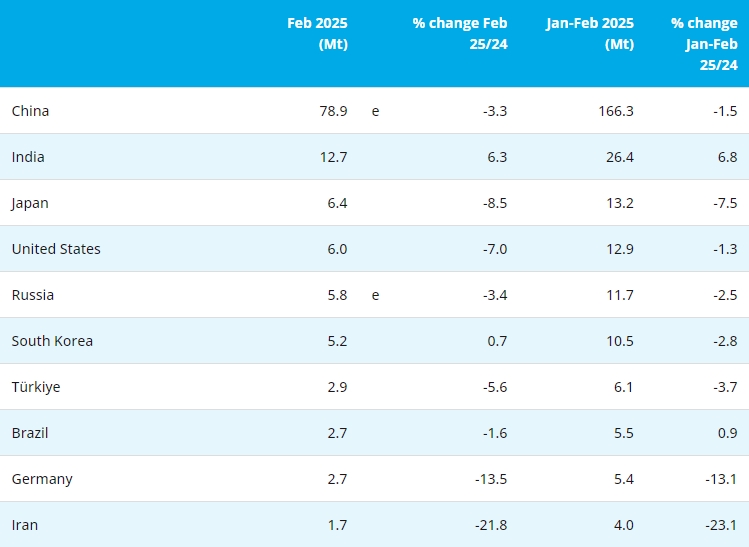Li Xinchuang, Secretary of the Party Committee and chief engineer of China Metallurgical Industry Planning and Research Institute, and chairman of the metallurgical special committee of the China Energy Conservation Association, pointed out in Report on Energy Saving and Low- carbon Development of China's Iron and Steel Industry (2020) on December 17, that in 2019 China's crude steel output was 996.34 million tons, and the annual power consumption was 453.3 billion kwh. What’s more, the spontaneous power generation of iron and steel enterprises totaled 240.3 billion kwh, with an average self-generating rate being 53%.
Combating climate change is a common challenge faced with human beings. Energy conservation, emission reduction and low-carbon development have become the consensus of all countries. As a country, which consumes large amounts of energy, energy conservation and emission reduction of iron and steel industry, is concerned by all walks of life.
Li Xinchuang illustrated at the "The 4th Member Congress of Metallurgical Industry Energy Conservation Committee of China Energy Conservation Association" that the comprehensive energy consumption per ton in key large and medium-sized iron and steel enterprises will continue to decline in 2019, with a decrease of 3.2% compared with 2015, and the energy saving target set in the 13th five-year-plan will be completed one year ahead of schedule.
In terms of taking advantage of residual heat and energy, Li Xinchuang said that according to statistics, in 2019, China's key steel enterprises built 55 CCPP units with a total installed capacity of 5975 MW, a year-on-year increase of 360 MW. Furthermore, iron and steel enterprises built nearly 700 gas boiler generating units, with a total installed capacity of 34730 MW, a year-on-year increase of 3130 MW. Last but not least, the enterprises built nearly 320 steam generating units with a total installed capacity of 2106 MW, an increase of 196 MW over the same period of last year.
Xu Zhiqiang, former deputy director of National Energy Conservation Center, pointed out that the core of low-carbon transformation of the steel industry is to replace fossil energy and to get rid of dependence on fossil energy. He believed that, as far as technology is concerned, we should focus on energy efficiency alternative technology. Research shows that the biggest contribution to carbon reduction is by greatly improving energy efficiency. At the same time, Xu Zhiqiang proposed that we should utilize residual heat replacement technology, expand the application field of waste heat, and expand urban heating and etc. Moreover, steel enterprises can transform from energy-waste to self-sufficiency and even to energy-supply.
Jiang Yi, academician of Chinese Academy of engineering and director of China Energy Conservation Association, also presented that energy conservation and the reduction of energy demand are the basis for realizing low-carbon transformation. The manufacturing industry can change products’ structure and technological process to improve energy efficiency.
Jiang Yi also mentioned that the importance of reusing residual heat and energy. He pointed out that, in the future, China will build 150-200 million kilowatts of nuclear power, which can emit 200-300 million kilowatts of waste heat and 50% of that will be in northern China. The north of China also requires 300-500 million kilowatts of coal-fired power plants to meet the demands of the peak time. The 300-million-kilowatt coal-fired and gas-fired thermal power plant will emit 450 million kilowatts of waste heat, which can be used as buildings’ heating source in winter. In addition, some high-energy-consuming industrial production processes will emit approximately 100-200 million kilowatts of residual heat. Among them, iron and steel enterprises are the most potential ones for residual heat utilization. Jiang Yi said that the above 75% of the residual heat, totaling 600 million kilowatts, can provide heat for 17 billion square meters of buildings, while in the future, 20 billion square meters of buildings in northern cities and towns will need heating.
- [Editor:Catherine Ren]



 Save
Save Print
Print Daily News
Daily News Research
Research Magazine
Magazine Company Database
Company Database Customized Database
Customized Database Conferences
Conferences Advertisement
Advertisement Trade
Trade












 Online inquiry
Online inquiry Contact
Contact

Tell Us What You Think